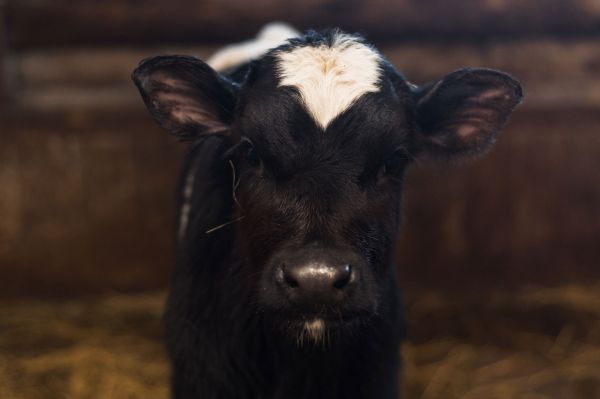Significant increase in Sexed-semen uptake

One of the biggest developments in Irish dairy breeding in recent years has been the widespread adoption of sexed semen as a technology that allows farmers to choose the sex of their calves to best economic advantage. Figures presented to this year’s IGA conference by Margaret showed the trends clearly: “More recently, the use of sexed semen has significantly increased on dairy farms, with over 20 per cent of total artificial insemination (AI) services using this method in 2024, an increase of over 50 per cent in only two years.”
Progress made in the reliability of the technology has been significant and has, undoubtedly, contributed to the increased uptake. Margaret said: “Although using sexed semen traditionally lowers conception rates, analysis over five years of field data from the ICBF shows that the relative performance of sexed semen compared to conventional semen is 92 per cent. This indicates a significant improvement in the technology over the past five years and therefore it is little surprise that the uptake has doubled in the last two years.”
Targeted breeding
As the reliability of sexed semen has improved significantly, delivering greater confidence to users, the necessity to adopt the technology has also increased. This is most certainly the case in herds with a large proportion of cross breeding with Jersey bloodlines. The male offspring are of very low economic value and sexed semen offers an opportunity to target selected cows for breeding replacements and using beef breeds for the remainder of the herd. Another reason for the increased use of sexed semen is the current plateauing of herd size on many farms. The era of rapid enlargement of the Irish dairy sector has closed, at least for now. That means farmers are targeting their breeding strategies at calving a cohort of dairy heifers that meet their replacement needs only, with the remainder being bred to beef breeds. The advantages are clear. Higher value surplus calves, higher merit replacements and a more viable source of higher commercial beef value (CBV) calves for the beef sector.
Clear-cut economic advantages
The ICBF representative summed up the benefits to the wider industry: “The profit potential for dairy farmers is enhanced and beef farmers have a supply of calves that have a reduced age to slaughter and require lower inputs through their lives. Last year marked the first time the number of beef calves born from dairy cows has surpassed the number of dairy calves born from dairy cows during the peak spring calving season - over 53 per cent of the calves born by April 20 were beef-dairy cross progeny.
Margaret struck a note of concern, however, around the increased adoption of sexed semen that needs to be monitored and managed: “Challenges remain, particularly with the shrinking population of dairy male calves available for selecting the next generation of AI dairy sires. To continue advancing the genetic merit of the national herd, technologies such as wider genotyping of the national herd and more precise mating decisions will be essential. These tools will play a critical role in sustaining and enhancing genetic progress in the years ahead.”
Calf-time management
The measuring and management of spring labour time-use on dairy farms was explored at the IGA conference by Conor Hogan of Teagasc’s Animal and Grassland Research and Innovation Centre, based at Moorepark. Conor first provided a broad overview of time use and management, commenting that 57 per cent of all farm labour input occurs during the spring/summer period with 33 per cent devoted to the springtime work burden. The figures were gleaned from a five-month study of 76 spring-calving Irish dairy herds from February to June, inclusive.
Moving from the general to the specific, Conor noted that one of the major work-related areas studied and measured related to calf care. This, the study showed, accounted for 20 per cent of work time in the peak months of February and March, making it a significant, time-demanding task. Strategies to reduce time input on farms included: contract rearing calves post-weaning, selling bull calves, use of automatic calf feeders, and training calves in group pens. These four activities, Conor explained to his audience, had the largest potential to reduce time input. “For example, farms that adopted automated calf feeding saw a 21 per cent improvement in calf-care efficiency.”
It was noted that certain labour-efficient technologies, including automatic calf feeders, require large capital expenditure and a cost-benefit analysis is necessary on individual farms to justify such investment.
Selling calves
The most effective means of reducing calf-time input, said Conor is by selling all surplus calves. This strategy does come with a critical caveat: calf care is critical. “Selling calves, as with calf management in general, requires excellent calf-health management,” said Conor.
The Teagasc study showed that selecting beef AI using the Dairy Beef Index is the optimum means of ensuring quality beef calves. Best practice calf management from birth was also emphasised by the farmer cohort involved in the study, including testing colostrum quality and following the 1-2-3 rule of using first milk from the cow, feeding it within two hours and feeding three litres at first feed.
There was also good advice provided from the Teagasc study on the longer-term management of calves: “Investments in calf housing, particularly where there is the expectation of keeping calves for the longer term, and automation such as automatic feeders, milk carts and pumps, were highlighted as significant time-saving measures. Adequate bedding and vaccination were also emphasised as important to prevent future calf-health challenges.”




